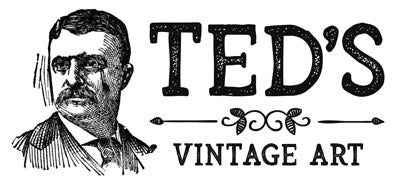Delaware Maps
The Mid-Atlantic state of Delaware, one of the original 13 colonies and the first state to ratify the United States Constitution, took statehood in 1787.
Our historic map archives include many vintage maps of Delaware dating back to 1795, as well as New Castle County and the city of Wilmington.
If you’re looking for a specific Delaware map and don't see it on this page, contact us, and we’ll check our archives. While we have an extensive collection of vintage maps, there remain many more we still need to restore, and chances are, we'll have what you're looking for.
Delaware is the second smallest state, next to Maine, and is bordered by Maryland, Pennsylvania, New Jersey, and the Atlantic Ocean. Its name derives from the Delaware River, a major waterway on the Atlantic coast that George Washington famously crossed during the Revolutionary War on Christmas Day, 1776.
Before European colonists arrived, Indian tribes lived in the area. The Dutch were actually the first to show up in the region in 1631 but were killed within a year of settling there in a conflict with the native tribes. Others would come, though, and settle in the region. As did other settlements of that time, the Europeans imported slaves.
In Delaware, slaves were used primarily to cultivate tobacco. When the agricultural economy later shifted from tobacco to farming, fewer slaves were needed, leading to a decline in slavery in Delaware. Methodists and Quakers would also later convince slaveholders to free their slaves, and by 1810, three-quarters of blacks in Delaware were free. In 1865, slavery was officially ended in Delaware when the 13th amendment was ratified.
World War I and II were a huge boon for Delaware because the state had a large gunpowder industry. Its shipyard industries also did quite well. Since then, the state’s economy has generally prospered and is led by agriculture, fisheries, and manufacturing. Tourism is also high on the list—Delaware’s sandy beaches, rural landscapes, and outdoor activities such as kayaking appeal to visitors. Tourists also love shopping in Delaware because it’s one of only five U.S. states that don’t charge a state sales tax.
A few of the top attractions in the small state of Delaware include Dover International Speedway (where you can watch NASCAR races), the Air Mobility Command Museum (for vintage aircraft enthusiasts), and Rehoboth Beach (featuring a bustling boardwalk right along the Atlantic ocean). And if you’re into odd roadside attractions, you can find the Ye Olde Fountain of Youth, the Merman of Delaware, and the raceway mascot ‘Miles the Monster’ along Delaware's byways.
Finally, did you know that chickens outnumber Delaware residents by about 200-to-1? There are just shy of 1 million people living in the state and somewhere around 200 million chickens. It’s a $1.7 billion industry in Delaware, and most of it is sold domestically in the mid-Atlantic states. Only about 10 percent is exported outside the U.S., mainly to Canada and Mexico.

Real Stories From Past Customers
From The Vintage Map Blog
Inside the Omaha Beach Invasion Map: A Cartographic Look at D-Day
Discover the untold story hidden within one of the most important maps of World War II. This rare Omaha Beach...
Explore Cape Cod's History Through 12 Stunning Vintage Maps
Step back in time with 12 beautiful vintage Cape Cod maps. Discover detailed historic prints perfect for beach houses, galleries,...
Vintage Map Gallery Walls: A Perfect Decor Idea for Farmhouse & Country Homes
A vintage map gallery wall is the perfect way to blend history, personal memories, and timeless decor. Ideal for farmhouse...





























































